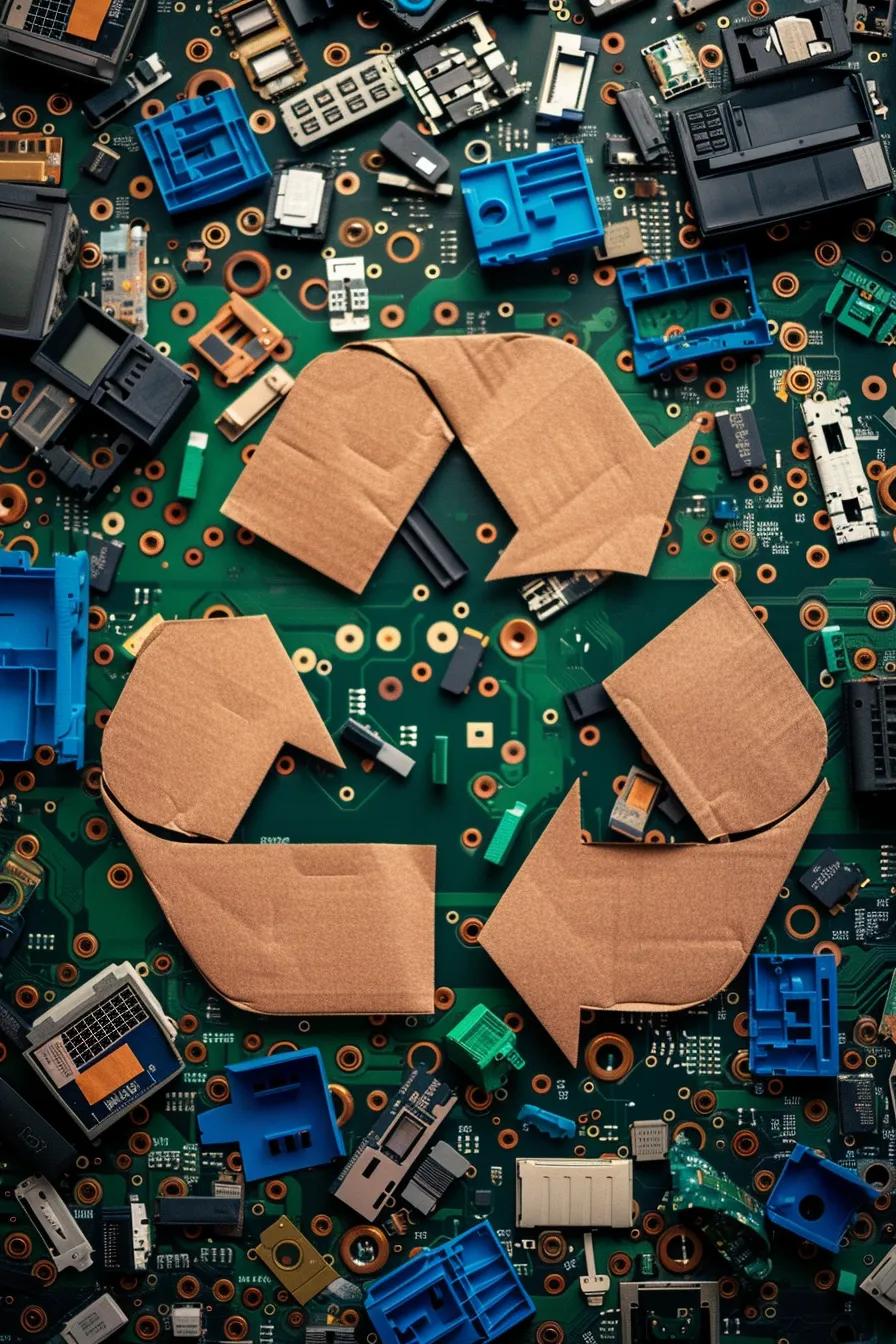Secure IT Asset Disposition 2025: UK Data Protection & Sustainability
Secure IT Asset Disposition (ITAD) is the comprehensive process of retiring IT equipment, ensuring complete data erasure, adherence to legal mandates, and responsible environmental practices. With technology evolving rapidly and e-waste volumes escalating, robust asset disposal strategies are crucial for safeguarding sensitive information and meeting corporate sustainability goals. This guide delves into what secure ITAD entails, why 2025 is a critical year for UK businesses, how it protects your data and the planet, and how organisations can maximise asset value and select the ideal ITAD partner.
- The definition, scope, and key drivers behind secure ITAD.
- Data protection measures, chain of custody protocols, and essential certifications.
- UK regulations, from GDPR to WEEE, and best practices for documentation.
- Circular economy principles, carbon reduction metrics, and CSR alignment.
- Financial advantages through refurbishment, resale, and return on investment (ROI) strategies.
- Criteria for selecting a secure ITAD provider and why Astralis Technology is the premier choice.
- Emerging trends influencing ITAD demand, compliance shifts, and innovative service offerings.
By mastering these core elements, UK businesses, public sector organisations, and channel partners can significantly minimise risk, enhance their sustainability performance, and unlock substantial asset value throughout 2025 and beyond.
What is Secure IT Asset Disposition (ITAD) and Why is it Crucial in 2025?
Secure IT Asset Disposition (ITAD) is the meticulous end-of-life management of hardware, integrating certified data destruction, environmental responsibility, and compliance verification. Its purpose is to prevent data breaches, ensure adherence to evolving UK regulations, and minimise the ecological impact of discarded electronics. As assets like laptops, servers, and mobile devices reach the end of their operational life, a structured disposal process guarantees that sensitive corporate and personal data cannot be accessed and that materials are responsibly reintegrated into the circular economy.
What Does Secure ITAD Involve?
Secure ITAD encompasses four fundamental stages:
- Data Sanitisation – Utilising advanced software wiping or degaussing techniques to permanently erase all digital information.
- Physical Destruction – Mechanically shredding or crushing storage media to ensure data is irretrievable.
- Asset Tracking – Meticulously documenting every device from collection through transit to final disposition.
- Environmental Recycling – Sorting, refurbishing, or recycling components in strict accordance with WEEE directives.
Each phase provides complete transparency and robust risk mitigation, culminating in a seamless workflow that delivers a certificate of destruction and a comprehensive sustainability report detailing reclaimed materials.
Why is 2025 a Pivotal Year for ITAD in the UK?
The UK is projected to generate over 1.65 million tonnes of e-waste by 2025, placing immense pressure on recycling infrastructure and regulatory oversight. With stricter enforcement of the Data Protection Act 2018 and heightened ESG reporting requirements, businesses face substantial penalties for data incidents (up to £17.5 million or 4% of global turnover) and significant reputational damage if e-waste is mishandled. Embracing sustainable ITAD transforms disposal from a routine operational task into a strategic imperative for risk reduction and resource conservation.
How Does Secure ITAD Ensure Data Security and Prevent Data Breaches?
Secure ITAD protects organisations by employing industry-leading methods, rigorous tracking, and certified controls to guarantee that no recoverable data remains on retired assets.
Data Security and IT Asset Disposition
Inadequate IT asset disposition practices can lead to severe data breaches, resulting in substantial financial penalties and irreparable reputational harm for businesses. Implementing secure ITAD procedures, including certified data erasure and physical destruction, is paramount for mitigating these critical risks.
What are the Certified Data Erasure and Physical Destruction Methods?
Certified data erasure employs sophisticated software tools to overwrite storage sectors multiple times, while physical destruction renders devices completely irreparable.
These methods provide layered assurance that sensitive information cannot be reconstructed, offering documented proof to satisfy auditors and regulatory bodies.
How Does the Chain of Custody Maintain Data Integrity in ITAD?
A robust chain of custody utilises secure containers, GPS-tracked transportation, and signed transfer records to meticulously monitor each asset’s journey. At every handover point—from collection and transit to destruction—designated personnel verify device counts and condition. This accountability framework prevents diversion or tampering, reinforcing trust in data security processes by linking every action to a timestamped log entry.
Which Certifications Guarantee Secure Data Destruction?
There isn’t a single certification that guarantees secure data destruction. Instead, assurance comes from a combination of internationally recognised standards, regulations, and frameworks that together demonstrate compliance, consistency, and technical security.
- NIST 800-88 Rev.1 – the globally recognised benchmark for media sanitisation, covering data erasure, cryptographic wipe, and physical destruction. It gives clients confidence that data is permanently unrecoverable.
- GDPR and ICO compliance – in the UK and EU, organisations are legally required to permanently delete personal data. Proving alignment with GDPR ensures data destruction meets strict legal obligations.
- Certified erasure software – tools such as Ziperase or Blancco are independently tested to meet standards like NIST, DoD, or HMG. This verifies that the method used for erasure is effective and defensible.
- ISO/IEC 27001 – certification for information security management systems. While not destruction-specific, it shows data disposal is managed within a wider, audited security framework.
- ISO 9001 and ISO 14001 – quality and environmental management standards. These ensure data destruction is consistent, auditable, and carried out with environmental responsibility.
- Cyber Essentials – a UK-specific certification that demonstrates strong baseline cyber security. This matters for the systems and processes handling data before it is destroyed.
Holding these certifications assures stakeholders that your processes meet internationally recognised security benchmarks and regulatory obligations.
What are the Risks of Insecure ITAD and How Are They Mitigated?
Failure to manage asset disposal securely can result in severe data breaches, identity theft, costly compliance fines, and significant brand damage.
- Implementing multi-layered destruction techniques to ensure no recoverable data fragments remain.
- Enforcing strict chain of custody protocols to eliminate the risk of loss or theft during transit.
- Conducting regular third-party audits to validate procedures and drive continuous improvement.
By proactively addressing these risks, organisations can effectively protect privacy, uphold legal duties, and strengthen stakeholder confidence.
What UK Regulations Govern Secure ITAD and How Do Businesses Comply?
UK legislation frames ITAD within critical data protection and environmental statutes, making compliance both a legal necessity and a reputational advantage.
How Does GDPR and the Data Protection Act 2018 Impact ITAD?
GDPR and the Data Protection Act 2018 mandate that organisations must guarantee the irreversible destruction of personal data residing on retired devices. Data controllers are required to maintain detailed records of disposal events and ensure that processors adhere to documented erasure standards. Non-compliance can lead to severe enforcement actions, including substantial fines and mandatory reporting of data incidents.
UK Regulations and ITAD Compliance
An in-depth analysis of UK regulations, including GDPR and WEEE, highlights the stringent legal requirements for secure ITAD. Businesses must rigorously comply with these regulations to avoid penalties and ensure responsible e-waste management.
What are the WEEE Regulations and Their Role in E-Waste Management?
The Waste Electrical and Electronic Equipment (WEEE) Regulations place specific obligations on businesses for the collection, treatment, and recycling of electronic waste. Organisations disposing of IT hardware must register with an approved compliance scheme, properly segregate hazardous components, and accurately report their throughput volumes. These regulations are designed to minimise landfill usage and maximise the recovery of valuable materials such as gold, copper, and rare earth elements.
Which Other UK Laws Affect ITAD Practices?
- Environmental Protection Act 1990 – Governs waste management duties, licensing requirements, and the duty of care for hazardous substances.
- Hazardous Waste Regulations 2005 – Mandates the classification, secure packaging, and tracking of toxic electronic components, including batteries and Cathode Ray Tubes (CRTs).
Adhering to these comprehensive frameworks ensures environmental responsibility and helps organisations avoid potential criminal or civil penalties.
How Do Audit Trails and Documentation Support Regulatory Compliance?
Comprehensive documentation, including manifest sheets, chain of custody logs, and certificates of destruction, serves as irrefutable evidence that due diligence and prescribed procedures have been meticulously followed. Audit trails enable regulators and internal stakeholders to trace each asset’s lifecycle, demonstrating accountability and facilitating a swift, effective response in the event of queries or inspections.
How Does ITAD Support Sustainability and the Circular Economy in 2025?
Secure ITAD extends far beyond mere data security, actively embracing resource efficiency, waste reduction, and corporate social responsibility.
What is the Circular Economy Model for IT Asset Disposition?
The circular economy model prioritises reuse, refurbishment, and recycling to maximise the lifespan of IT assets and minimise the consumption of raw materials. Devices are systematically assessed for functional components, refurbished for redeployment, or disassembled to recover valuable materials. This approach significantly reduces landfill waste, conserves the energy required for manufacturing new products, and fosters genuinely sustainable business practices.
E-waste Management and the Circular Economy
The refurbishment and recycling of IT assets substantially reduce e-waste volumes and associated carbon emissions. This strategy aligns perfectly with corporate social responsibility and overarching sustainability objectives.
How Does ITAD Reduce E-Waste and Carbon Footprint for UK Businesses?
By diverting end-of-life hardware from landfills and reintroducing refurbished equipment into the market, ITAD significantly cuts e-waste volumes and the carbon emissions linked to the production of new devices. Tracking key environmental metrics—such as tonnes of materials recovered and CO₂ emissions saved—provides tangible evidence of progress towards carbon reduction targets.
How Does ITAD Contribute to Corporate Social Responsibility (CSR) and ESG Goals?
Secure ITAD actively supports CSR initiatives by promoting ethical disposal practices, protecting community health, and facilitating charitable redistribution programmes. Within ESG frameworks, ITAD provides quantifiable indicators—such as e-waste diversion rates, refurbished units resold, and verified destruction certificates—that are crucial for sustainability reporting and investor disclosures.
What Are the Financial and Environmental Benefits of Sustainable ITAD?
Sustainable ITAD delivers significant cost savings through reduced waste management fees and extended asset utility via refurbishment. The resale of decommissioned hardware generates additional revenue streams, while lower procurement expenses and a positive environmental impact simultaneously strengthen profit margins and enhance brand reputation.
What are the Value Recovery Opportunities Through Secure ITAD?
Secure ITAD effectively transforms retired IT assets into valuable financial and strategic resources through targeted remarketing and reuse strategies.
How Can UK Businesses Maximise ROI from Retired IT Assets?
- Accurate Asset Valuation – Precisely assessing equipment condition, age, and current market demand.
- Channel Partnerships – Leveraging established reseller networks or certified remarketing platforms.
- Bulk Refurbishment – Consolidating high-volume disposals into efficient refurbishment batches for cost-effective upgrades.
What Cost Savings Result from Refurbishment and Resale?
Refurbished devices typically cost 40–60% less than brand-new equivalents, offering immediate procurement savings. Concurrently, the resale of decommissioned units can effectively offset depreciation costs, reducing capital expenditure on replacements and improving overall total cost of ownership metrics.
How Does Value Recovery Align with Sustainability Goals?
Monetising existing hardware extends device lifecycles and reduces the demand for new production, directly supporting circular economy objectives. The combination of financial and environmental benefits creates a compelling business case for sustainable IT asset management that resonates strongly with both Chief Financial Officers (CFOs) and Chief Sustainability Officers (CSOs).
How to Choose a Secure and Compliant ITAD Partner in the UK?
Selecting the right ITAD provider is crucial for ensuring data security, regulatory adherence, and minimising environmental impact through specialised expertise and certified processes.
What Key Criteria Should Businesses Consider When Selecting an ITAD Provider?
- Certifications and Standards – Look for alignment with internationally recognised frameworks such as ISO 27001, GDPR compliance, and erasure standards like NIST 800-88. Certified erasure software and independent audits provide additional assurance.
- Service Scope – Ensure comprehensive offerings including data erasure, physical destruction, recycling, and remarketing.
- Chain of Custody Controls – Verify trackable logistics and signed handover protocols are in place.
- Reporting Capabilities – Demand detailed audit trails and clear environmental impact statements.
These critical factors guarantee technical proficiency, legal compliance, and alignment with your sustainability objectives.
What Are the Pros and Cons of On-site vs. Off-site Data Destruction?
On-site destruction provides real-time visibility and minimises transport risks but may require specialised equipment on your premises. Off-site destruction centralises processes within secure, purpose-built facilities equipped with advanced machinery but introduces transit time and requires careful logistical coordination. Each model offers a distinct balance of convenience, cost, and control, tailored to specific organisational priorities.
How Do ITAD Services Differ for Public Sector, Enterprise, and Channel Partners?
- Public Sector solutions prioritise stringent regulatory reporting, enhanced security clearances, and meticulous asset reconciliation for audit readiness.
- Enterprise programmes focus on managing large-scale logistics, harmonising global compliance requirements, and integrating advanced asset-management platforms.
- Channel Partners benefit from flexible white-label solutions, adaptable service levels, and co-branded sustainability reporting capabilities.
Tailoring services to the specific audience ensures optimal alignment with sector-specific requirements and procurement processes.
Why Choose Astralis Technology for Secure ITAD in 2025?
Astralis Technology combines premier industry certifications with state-of-the-art chain of custody systems and deep circular economy expertise. Our end-to-end ITAD service encompasses secure data erasure, both on-site and off-site destruction, comprehensive environmental reporting, and effective value recovery channels. Trusted by UK public authorities and leading enterprise clients, we deliver unparalleled transparency, compliance, and sustainability in every disposal cycle.
What Are the Emerging Trends and Future Outlook for Secure ITAD in 2025 and Beyond?
Rapid technological advancements and evolving regulatory landscapes continue to shape the ITAD sector, presenting both significant challenges and exciting opportunities.
How Will Increasing E-Waste Volumes Affect ITAD Demand?
With global e-waste projected to exceed 82 million tonnes by 2030, conventional recycling systems will face unprecedented strain, driving substantial demand for specialised ITAD solutions. Organisations that proactively adopt secure disposal programmes will gain a distinct competitive advantage in managing escalating volumes and meeting stakeholder expectations.
What Regulatory Changes Are Anticipated for ITAD Compliance?
Anticipated upcoming UK and EU regulations may introduce mandatory ESG disclosures for asset-disposal footprints, enhanced auditing standards, and more stringent cross-border data destruction requirements. Early adaptation to these forthcoming changes will significantly reduce compliance risks and future-proof your IT asset workflows.
How Will Sustainability and ESG Reporting Shape ITAD Practices?
As investors and consumers increasingly demand transparent environmental reporting, ITAD data—such as e-waste diversion rates and carbon savings achieved—will become integral to corporate ESG ratings. Providers offering automated impact dashboards and validated metrics will emerge as indispensable strategic partners in organisations’ sustainability journeys.
What Innovations Are Driving Secure ITAD Services Forward?
Emerging technologies, including AI-driven asset valuation, blockchain-secured chain of custody, and automated robotics for materials sorting, are revolutionising efficiency and transparency in ITAD. Integrating these advancements empowers businesses to scale their ITAD operations effectively while maintaining the highest standards of security and environmental responsibility.
Secure ITAD will continue to be a fundamental pillar of robust risk management, stringent regulatory compliance, and sustainable resource stewardship. Organisations that integrate certified destruction methods, meticulous custody tracking, and circular economy principles will confidently protect their data, optimise value recovery, and meet the rigorous demands of 2025 and beyond.
Laura Cooper is a seasoned professional with decades of experience in the IT Asset Disposition (ITAD) industry. Her extensive career has been dedicated to developing and implementing secure, compliant, and environmentally responsible ITAD strategies for businesses across the UK. Laura possesses a deep understanding of data security protocols, regulatory landscapes, and circular economy principles, making her a leading voice in the field of IT lifecycle management and sustainable e-waste solutions.
Ready to Protect Your Data and Maximise Value?
Secure IT Asset Disposition isn’t just about compliance — it’s about safeguarding your business, unlocking hidden value, and proving your commitment to sustainability. Astralis Technology delivers fully certified ITAD services across the UK, with transparent reporting, resale expertise, and complete peace of mind.
Book your free, no-obligation ITAD consultation today and discover how we can help you stay secure, compliant, and future-ready.
Get My Free Consultation






